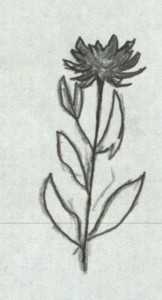Based on research by Hayoon Chung, MIT ’16
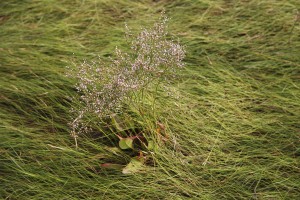
Salt marsh vegetation serves as a filter because it needs phosphorus and nitrogen to live. Those essential nutrients are absorbed by the plants through their roots to help them flourish. However, these nutrients are often limited in soils (this is the reason why farmers use fertilizers). When the nitrogen and phosphorus in surface run-off enters the salt marsh, a significant amount will be filtered before the water enters the ocean.
Smooth cordgrass: (Spartina alterniflora)
Smooth cordgrass is a tall, smooth grass ranging from 6 inches to 7 feet tall with wide, thick leaves. It is located in the lower marsh and is flooded twice a day by the tides. The roots, strong and complex, hold onto the soils of the banks and prevent shoreline erosion. It can use water from both the fresh groundwater, and ocean saltwater. *native
Perennial salt marsh aster(Aster tenuifolius)
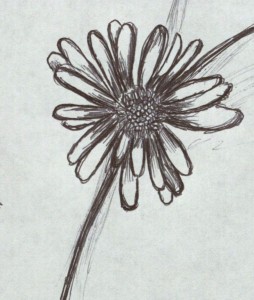
Salt Hay: (Spartina patens)
Salt hay is a slender and wiry plant that grows in thick mats 1 to 2 feet high. Its stems are wispy, hollow, and weak. It is usually found in the high marsh zones where there is less wind and they are only covered periodically by tides. Although it has protection against salt water, it is less tolerant to salt water than other marsh grasses. Along with the smooth cordgrass, the salt hay provides a rich habitat for crustaceans, mollusks, and birds, and are major sources of organic nutrients. Mats of salt hay grass are inhabited by many small animals and are an important food source for ducks and sparrows. *native
Plant that often grows in the South. It is usually found in the higher marshes.
Phragmites/Common reed: Phragmites australis
The common reed is a tall, standing 5 to 15 feet tall, and produces large flowers, that can grow from 6 to 12
inches long. The leaves, smooth, flat,and green, can grow to 20 inches long. It is often found in the higher marshes, and are important in protecting the coast from winds, tides, and storms, by blocking and absorbing its contact. *Commonly invasive. Although there are native and non-invasive phragmites, they are rare.
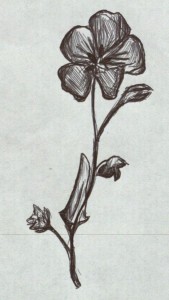
Sea-shore mallow (Kosteletzkya virginica)
Salt grass: ( Distichlis spicata)
Salt grass often grows in higher salt marshes with the salt hays. It looks similar to salt hay but, once flowered, has single, spindle-shaped flower heads comprised of numerous individual flowers. It colonizes marsh patches quickly with stiff stems that grow from 8 to 15 inches high and roots that are capable of expanding and producing new shoots. It is an important plant in the biome as a shade-provider to plants that cannot normally grow under the harsh sunlight. They also provide habitats for many invertebrates and feeds many salt marsh birds and mammals. . *native
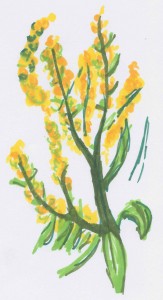
Sea lavender (Limonium)
Marsh elder/marsh elder flowers(Iva annua)
Leave a Reply
You must be logged in to post a comment.
